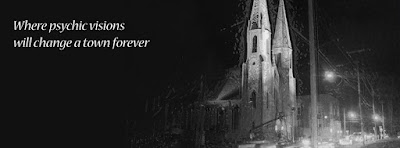NATURE TRAVEL: Kluane National Park and Reserve—Canada
Kluane – high in the mountains of southwest Yukon
– is an extremely wild territory. The park is home to Canada’s highest peak
(5,959-metre Mount Logan), its
largest ice field and North America’s most genetically diverse grizzly
population. Travelers from around the world come to traverse alpine passes on
backcountry odysseys and raft past calving glaciers. With exceptional day hikes
and highway-side scenery, Kluane awes from every angle.
If
you yearn for the wild beauty of an unspoiled Canadian landscape, Kluane
National Park and Reserve is for you. Explore mountains, lakes, rivers and
forests that have been home to Southern Tutchone people for thousands of years
and discover the heart of their traditional culture and way of life. From
scenic hiking on gentle trails to backcountry adventures in the mountain
wilderness, a variety of activities await you.
This
is an empire of icy mountains in a vast international preserve; most of them
are, actually, the tallest peaks in North America and the largest ice fields
outside the polar caps. Over half the land mass is permanently draped in snow
and ice – the remainder fosters forests and tundra and stable populations of
eagles, grizzlies and other species often at risk elsewhere.
The climatic overlap of the pacific and arctic
air masses over Kluane National Park & Reserve has resulted in one
of the greatest diversity of plants and wildlife in northern Canada. A mountainous forest of white spruce,
trembling aspen and balsam poplar covers much of the lower valleys and slopes. Tree line is at 1050 to 1200 m (3,500
to 4,000'), depending upon local conditions. Low-growing or stunted shrubs in
the transition zone include:
willow, dwarf birch, and alder, which provide protection for the smaller
plants. Summers in alpine tundra (generally
above 1400 m or 4600') are a flourish of color, with over 200 varieties of
alpine flora.
 |
| Mount Logan at Sunset |
Kluane
National Park & Reserve provides prime habitat for many species of
wildlife, particularly Dall sheep, the park's most abundant large
mammal. Visitors often see them foraging on the wind-swept slopes of Tachal
Dhal in the spring, fall and winter. Mountain
goats scramble along rocky cliffs and ledges in the south, and a small
herd of caribou occasionally
wander through the Duke River area. North America's largest subspecies of moose also range through Kluane National
Park & Reserve.
Populations
of grizzly bears move between
alpine meadow and valleys with the passing of the seasons. Black bears, which prefer forested
areas, are also common in Kluane National Park & Reserve. Visitors to
Kluane National Park & Reserve should remember that bears make their home
in the park. We are the visitors. They are the inhabitants.
 |
| Dall Sheep |
The
south-western Yukon has a great diversity of birds. At least 150 species have been observed in
Kluane National Park & Reserve, of which 118 nest in the park. On a spring day, sightings could include
varied thrushes, yellow-rumpled warblers and mountain bluebirds. Kluane
National Park & Reserve also provides sanctuary for a variety of birds of
prey from the swift flying falcon to the broad soaring wings of bald and golden
eagles.
Kluane
National Park & Reserve is dominated by mountains and ice, which make up 82% of the surface area. The St. Elias Mountains, Canada's highest and most massive mountains,
have two ranges separated by a narrow trough, the Duke Depression. The Kluane
Ranges, a chain of mountains averaging 2500m (8,000') in height, are
visible to travelers on the Haines Road or the Alaska Highway. Beyond these
guardians of the interior, to the west lie the rugged Icefield Ranges, whose peaks soar into the 5000m (16,000') range.
The giants are: Mount Logan (5,959m,
19,545') the highest mountain in Canada and the second highest peak on
the continent; Mount St. Elias (5,488m,
18,005'); Mount Lucania (5,231m,
17,162') and many others.
 |
| St. Elias Mountains |
Although many of the highest mountains are not
visible from any point along the highway, some of the higher peaks can be
spotted in the distance from viewpoints near Kathleen Lake or the Donjek River.
Amid
these ranges is a legacy of the last Ice Age - one of the world's largest
non-polar ice fields. Massive
quantities of snow continue to accumulate as moist Pacific air moves over the
St. Elias Mountains. Valley glaciers such
as Naludi (Lowell Glacier),
65 km. long, radiate from the ice fields. Glacial movements are often immense
and spectacular. In the past, surges
of Naludi (Lowell Glacier) have blocked the Alsek River near Goatherd
Mountain with a dam of ice. The resulting glacial lakes extended well back to, and
over the present site of Haines Junction.
 |
| Lowell Glacier |
The
most recent Lake Alsek is said
to have drained around 1850 in two days after the ice dam broke, with a flow
rate comparable to that of the Amazon River. Huge gravel current ripples from
this outflow, as well as wave-cut lake benches, are visible along the Alsek
trail, 10 km north of Haines Junction along the Alaska Highway. The flooding
associated with the advances and retreat of Naludi (Lowell Glacier) is the
subject of many Southern Tutchone native people's legends and stories.
Rising
in the mountains of Kluane National Park Reserve, its braided upper reaches nestle in a broad valley, providing an oasis
for mountain goats, Dall sheep and other wildlife. Sand dunes and glacial till
provide a contrasting environment for the diverse vegetation found here.
Downstream, rivers of ice flow into the Alsek's silt-laden waters, calving huge icebergs into the river
before it leaves the Park on its journey to the Pacific Ocean on the Alaskan
Panhandle.

















